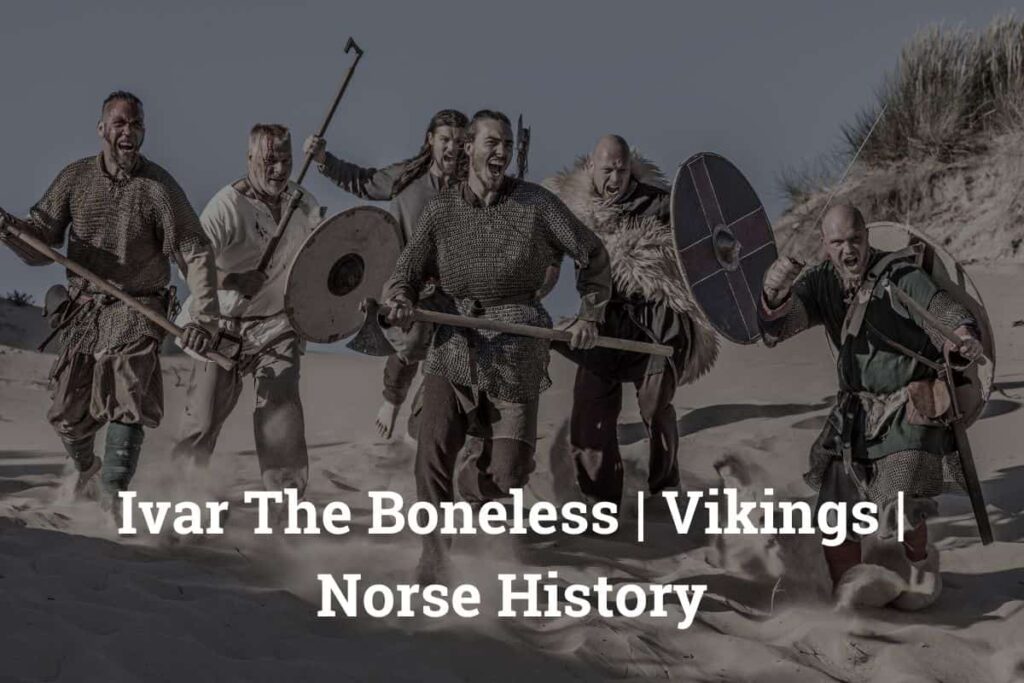Introduction
Delving into the annals of history, one name that stands out amidst the tumultuous Viking era is that of Ivar the Boneless. Often shrouded in mystery and myth, his legacy continues to intrigue historians and enthusiasts alike. In this article, we embark on a journey to uncover the life, death, and enduring legacy of this enigmatic figure.
Who was Ivar the Boneless?
Ivar the Boneless, also known as Ívarr hinn Beinlausi in Old Norse, was a Viking chieftain and renowned warrior who lived during the 9th century. He was purportedly the son of the legendary Ragnar Lothbrok, although the veracity of this claim is debated among historians. Despite his physical disability, which gave rise to his epithet “the Boneless,” Ivar was a formidable leader who played a significant role in shaping the course of Viking history.
Born in the midst of Viking expansion and exploration, Ivar was raised amidst the tumult of raids and battles that characterized the era. His upbringing instilled in him a fierce warrior spirit and a strategic mindset that would serve him well in the years to come. Alongside his brothers, including the famed Ubbe and Hvitserk, Ivar embarked on daring expeditions that would cement his reputation as one of the most feared Viking leaders of his time.
The Legacy of Ivar the Boneless

Ivar left an indelible mark on Viking history through his military exploits and strategic prowess. He is often depicted as a cunning tactician and a fearsome warrior, leading his warriors to numerous victories across the British Isles and beyond. His leadership during the Great Heathen Army’s invasion of Anglo-Saxon England solidified his reputation as one of the most formidable Viking leaders of his time.
Beyond his martial achievements, Ivar’s legacy also endures through his contributions to Viking culture and society. As a chieftain, he oversaw the establishment of settlements and trading outposts, facilitating the expansion of Viking influence across Europe. Additionally, his role in shaping Norse mythology and folklore remains evident in sagas and legends passed down through generations.
Ivar the Boneless Skeleton Found

In recent years, archaeological discoveries have shed new light on the life of Ivar. One of the most significant findings was the purported discovery of Ivar’s skeleton in Repton, England, in the late 20th century. This discovery reignited interest in Ivar’s life and reignited debates surrounding his true identity and legacy.
The excavation of the Repton site unearthed a wealth of artifacts, including weapons, jewelry, and human remains, believed to date back to the Viking Age. Among these discoveries was a burial mound containing the remains of numerous individuals, including one with signs of a severe physical disability consistent with descriptions of Ivar the Boneless. While conclusive evidence linking the skeleton to Ivar remains elusive, the discovery has fueled speculation and scholarly inquiry into the life and times of this legendary figure.
Ivar the Boneless’ Death
Determining the exact age of Ivar at the time of his death remains a subject of speculation among historians. Some sources suggest that he was relatively young, while others propose that he lived to a ripe old age. Without conclusive evidence, the question of Ivar’s age at death remains open to interpretation.
Theories Surrounding Ivar the Boneless’ Death
The circumstances surrounding Ivar death are shrouded in mystery and conjecture. Various accounts and legends exist, with some attributing his demise to natural causes, while others recount tales of treachery and assassination. One prevailing theory suggests that Ivar succumbed to injuries sustained in battle, although this remains speculative.
Among the most enduring legends surrounding Ivar’s death is the tale of his final battle against the Anglo-Saxon forces led by King Ælla of Northumbria. According to Norse sagas, Ivar met his end in a brutal clash, seeking revenge for the death of his father Ragnar Lothbrok. While the veracity of this account remains uncertain, it underscores the enduring legacy of Ivar the Boneless as a fearsome warrior and Viking hero.
If You Want To Know More About Vikings you can Read our article Top 10 Most Famous Vikings
FAQs about Ivar the Boneless:
Q: Was Ivar the Boneless a real historical figure?
A: Yes, Ivar the Boneless was a real historical figure who lived during the Viking Age.
Q: How did Ivar the Boneless get his name?
A: The origin of Ivar’s epithet “the Boneless” is uncertain, with various theories posited by historians and scholars.
Q: What was Ivar the Boneless’ role in Viking history?
A: Ivar was a prominent Viking leader known for his military prowess and strategic acumen.
Q: Are there any contemporary accounts of Ivar the Boneless?
A: While contemporary accounts of Ivar are scarce, references to him can be found in medieval sagas and chronicles.
Q: Where was Ivar buried?
A: The exact burial site of Ivar the Boneless remains unknown, adding to the mystery surrounding his life and death.
Conclusion
In conclusion, Ivar the Boneless stands as a legendary figure whose life and legacy continue to captivate the imagination of people worldwide. While much of his story remains shrouded in mystery, archaeological discoveries and historical accounts offer glimpses into the life of this remarkable Viking leader. His indomitable spirit and enduring legacy ensure that the legend of Ivar will endure for generations to come.



